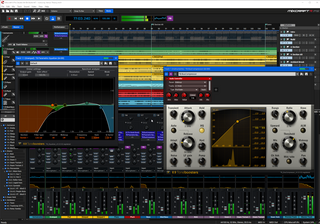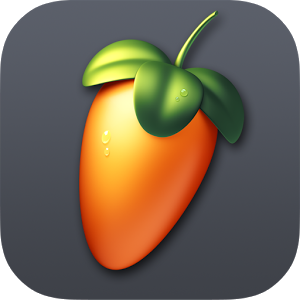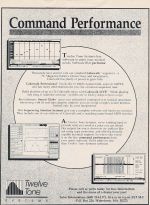Cakewalk, Inc. is a former music production software company based in Boston, Massachusetts and currently a brand of Singaporean music company BandLab Technologies. The company's best known product was their professional-level digital audio workstation (DAW) software, SONAR. SONAR integrated multi-track recording and editing of digital audio and MIDI. The company also offered a full range of music software products, including Pyro Audio Creator—a digital music management program, and Dimension Pro—a virtual instrument.

FL Studio is a digital audio workstation (DAW) developed by the Belgian company Image-Line. It features a graphical user interface with a pattern-based music sequencer. It is available in four different editions for Microsoft Windows and macOS.

Cubase is a digital audio workstation (DAW) developed by Steinberg for music and MIDI recording, arranging and editing. The first version, which was originally only a MIDI sequencer and ran on the Atari ST computer, was released in 1989. Cut-down versions of Cubase are included with almost all Yamaha audio and MIDI hardware, as well as hardware from other manufacturers. These versions can be upgraded to a more advanced version at a discount.

Pro Tools is a digital audio workstation (DAW) developed and released by Avid Technology for Microsoft Windows and macOS. It is used for music creation and production, sound for picture and, more generally, sound recording, editing, and mastering processes.

A digital audio workstation is an electronic device or application software used for recording, editing and producing audio files. DAWs come in a wide variety of configurations from a single software program on a laptop, to an integrated stand-alone unit, all the way to a highly complex configuration of numerous components controlled by a central computer. Regardless of configuration, modern DAWs have a central interface that allows the user to alter and mix multiple recordings and tracks into a final produced piece.

Renoise is a digital audio workstation (DAW) based upon the heritage and development of tracker software. Its primary use is the composition of music using sound samples, soft synths, and effects plug-ins. It is also able to interface with MIDI and OSC equipment. The main difference between Renoise and other music software is the characteristic vertical timeline sequencer used by tracking software.
Emagic was a music software and hardware company based in Rellingen, Germany and a satellite office in Grass Valley, California. On July 1, 2002 Emagic was bought by Apple Computer. Emagic's Windows-based product offerings were discontinued on September 30, 2002.

Acid Pro is a professional digital audio workstation (DAW) software program currently developed by Magix Software. It was originally called Acid pH1 and published by Sonic Foundry, later by Sony Creative Software as Acid Pro, and since spring 2018 by Magix as both Acid Pro and a simplified version, Acid Music Studio. Acid Pro 11 supports 64-bit architectures, and has MIDI, ASIO, VST, VST3, DirectX Audio, and 5.1 surround sound support.

Logic Pro is a proprietary digital audio workstation (DAW) and MIDI sequencer software application for the macOS platform developed by Apple Inc. It was originally created in the early 1990s as Notator Logic, or Logic, by German software developer C-Lab which later went by Emagic. Apple acquired Emagic in 2002 and renamed Logic to Logic Pro. It was the second most popular DAW – after Ableton Live – according to a survey conducted in 2015.
VDMSound was an open-source emulator of legacy sound card devices, designed to allow video games and other applications written for MS-DOS to run on the Microsoft Windows NT/2000/XP/95/98/Me operating systems. Its author is Vlad Romascanu.
This article describes audio APIs and components in Microsoft Windows which are now obsolete or deprecated.

LMMS is a digital audio workstation application program. It allows music to be produced by arranging samples, synthesizing sounds, entering notes via computer keyboard or mouse or by playing on a MIDI keyboard, and combining the features of trackers and sequencers. It is free and open source software, written in Qt and released under GPL-2.0-or-later.
Sonar was a digital audio workstation created by the former Boston, Massachusetts–based music production software company Cakewalk. It was acquired by Singaporean music company BandLab Technologies and renamed Cakewalk by BandLab.

Mixcraft is a digital audio workstation for Windows, developed by Acoustica since its release in April 2004. Serving as a digital audio workstation, MIDI sequencer, virtual instrument host, non-linear video arranger, and music loop recording program, Mixcraft has been a staple in audio production.

Overture is a music notation (scorewriter) program for Windows and Macintosh platforms, published and developed by Sonic Scores. While Overture is primarily a scorewriter program, it also allows editing the score's MIDI audio playback data in the manner of sequencer and digital audio workstation (DAW) software.

MAGIX Samplitude/ Sequoia is a computer program made by MAGIX for recording, editing, mixing, mastering and outputting audio. The first version was released in 1992 for the Amiga and three years later for Microsoft Windows. The latest versions of the software are Samplitude Pro X5, Samplitude Pro X5 Suite and Sequoia 16. Samplitude is an example of a digital audio workstation (DAW).

Z-Maestro is a MIDI and digital audio sequencer designed with a focus on ease of use and power for the Windows platform. Developed by Z-Systems, it has seen over a dozen regular releases spaced two to six months apart.

FL Studio Mobile is a digital audio workstation available for Android, iOS and Windows UWP.
Cakewalk by BandLab is a full-featured Digital Audio Workstation software package for audio and MIDI composing, recording, arranging, editing, mixing and mastering. It is developed and published under a free subscription licensing model by BandLab Technologies of Singapore for the Microsoft Windows platform.














